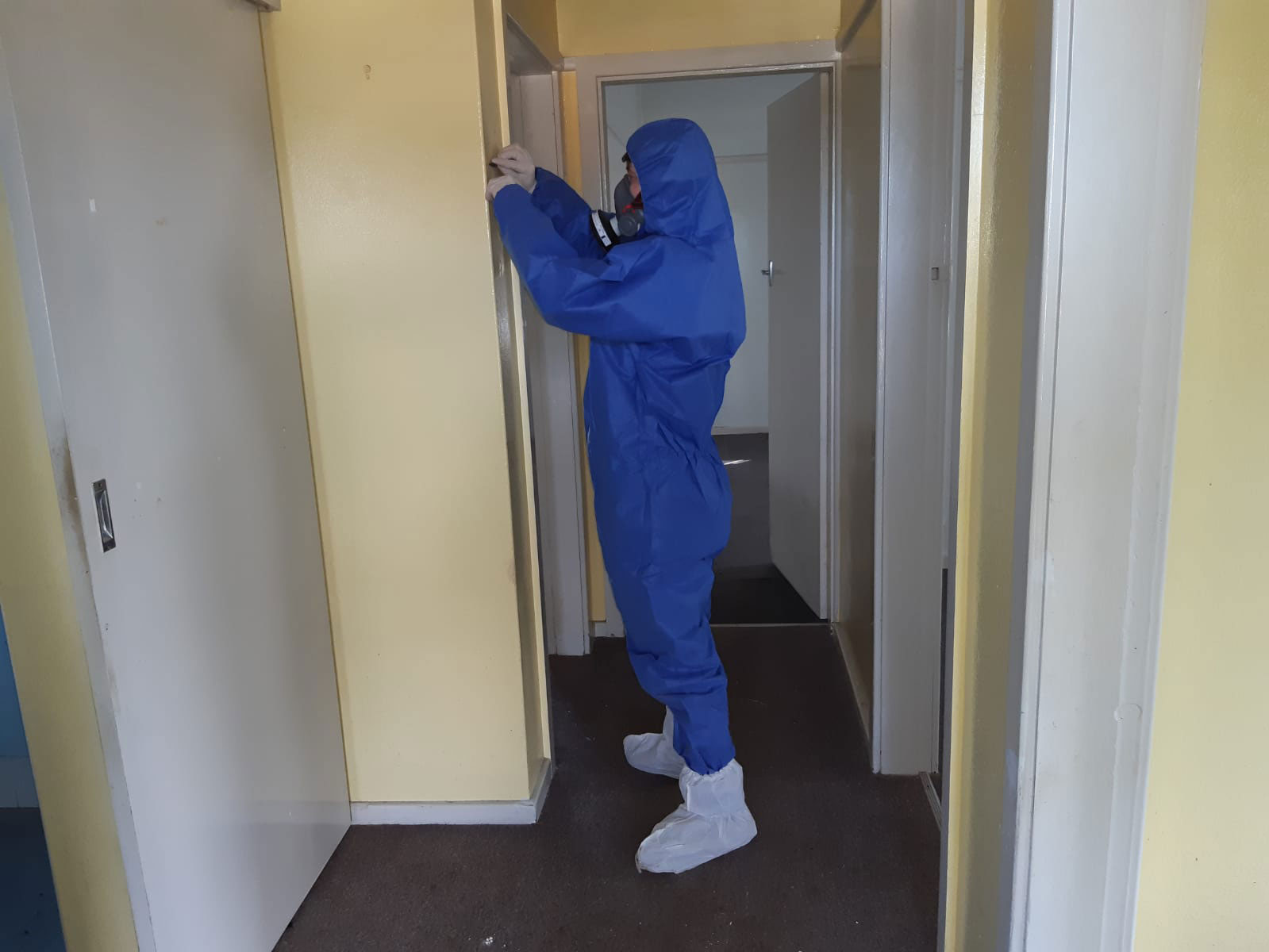What is the process
Lead Dust or Paint Inspection

Lead Inspection
Lead
What is Lead?
Lead is a metal obtained from mining lead ore, which was used in a number of forms but is most commonly found presenting a health risk in the form of lead containing paint and dust. Lead paint in Australia was starting to be phased out from the 1970s with the allowable limit of lead particles in paint down to 0.1% as of 1997.
What are the hazards of Lead?
Lead poses health risks to occupants of buildings, trade personnel, or anyone in proximity to hazardous lead materials. Lead can pose a risk to health through being inhaled via dust, fumes or swallowed through eating contaminated food or even through lead dust contaminated fingers. Untreated lead poisoning in adults, children and pets can affect all systems in the body including the central and peripheral nervous system which can be fatal. Often pets are the first to show signs of lead poisoning due to their small body size.
Common symptoms of lead poisoning include:
- loss of appetite
- constipation
- diarrhoea
- loss of weight
- severe abdominal pains
- muscle weakness
- limb paralysis
- headaches
- tiredness
- irritability
Continued exposure or high levels of exposure can cause serious long term health complications such as:
- anaemia
- kidney damage
- nerve and brain damage
Lead paint inspection
Lead paint was used in Australian residential and commercial buildings up until 1970 and even up to more recent years in industrial paints. Dust or paint chips containing lead can be released through minor building/trade works or degradation over time and can pose a major health risk. If you are worried that your house or property contains lead paint, rather than risking the exposure, engage EnviroX Consulting to conduct an inspection to determine if any paints contain lead particles. Samples will be collected from any areas of concern to be tested by a NATA accredited laboratory and create a report with conclusions and recommendations for the management of any lead paint contaminants within your home.
Lead dust inspection
When lead was used in industry and fuels there was a large concentrations of lead particles within the atmosphere. Over many years this lead has settled with the most common place for the lead dust to settle and build up being ceiling spaces of many homes and buildings. High lead dust concentrations are very common within ceiling spaces of houses or buildings that are over 30 years old, especially if the ceiling space has not been disturbed for the entire time.
A lead dust inspection will comprise of an Occupational Hygienist attending the site and collecting a sample (multiple if required) to determine if elevated lead dust concentrations presenting a health risk are present. Sampled will be tested by a NATA accredited lab and a report will be created containing results, conclusions and future suggestions for management of the area.
Lead removalists can also be engaged through EnviroX Consulting to remove any lead contaminated paints or dusts. We will ensure that they have all the appropriate licenses, are cost effective and deliver a high quality of work.
FAQ
Frequently asked questions
When might I need an asbestos inspection?
Any renovation or demolition work in a workplace built before December 31, 2003 now requires an Asbestos / Hazardous Materials Audit / Survey / hazardous materials inspection.
Find out more about Hazardous Material Surveys.
The Work, Health and Safety Regulations 2017Can I remove asbestos without a license ?
It is a requirement under the current legislative codes of practice that the removal of any ACM greater than 10 square metres, it is to be undertaken by a licensed Asbestos Removalist with the required licenses, tickets and PPE – which we can also organise and provide for if required.
EnviroX Consulting recommends all asbestos removals to be undertaken by a licensed asbestos removalist.
Does my property have lead based paints ?
Lead is a metal obtained from mining lead ore, which was used in a number of forms but is most commonly found presenting a health risk in the form of lead containing paint and dust. Lead paint in Australia was starting to be phased out from the 1970s with the allowable limit of lead particles in paint down to 0.1% as of 1997.